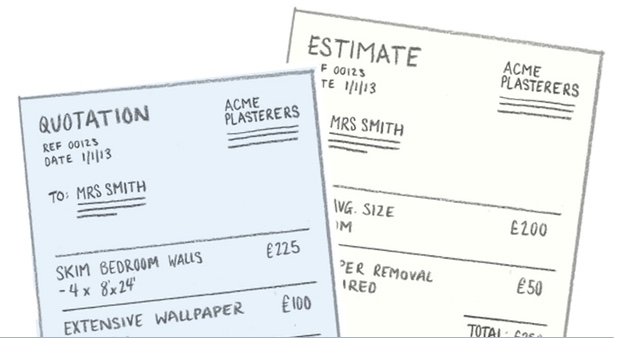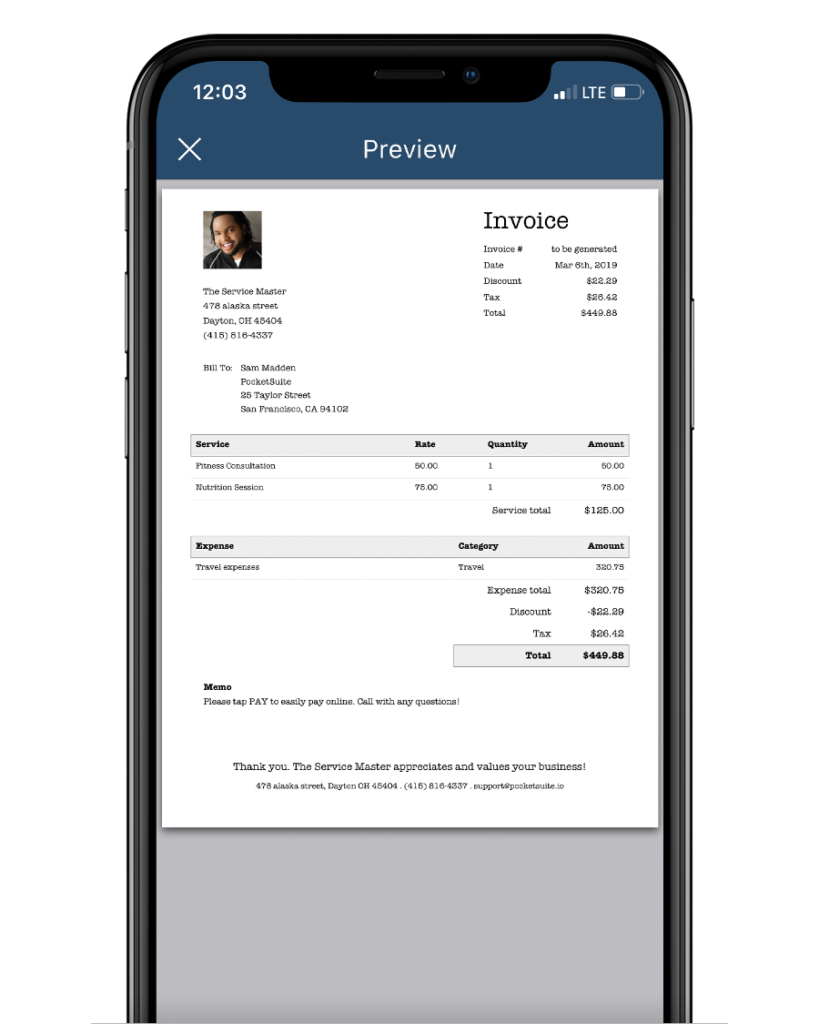Are you a contractor, consultant, or photographer that’s looking to create an estimate for your client, and you’re not sure how to do it? Fear not, for today we’ll tackle an important topic for anyone who’s ever been asked the question: “Could you send me a proposal?” “How much would it be if …?” “Can I have a quote for that…?”
Whether you need to itemize an estimate for a basic renovation job, or a detailed itemization for a multi-day wedding photography package, or a fixed fee proposal for a consulting gig, keep reading for a quick guide on how to get this done.
Even if you’re an experienced small business owner or solo-preneur, you’ll find some tips in this article that will change your business and lead you to create more accurate estimates that your clients will really appreciate.
We’ll even discuss the topic of how to win more business with your professional estimation tactics!
Estimating costs for a project is a practice that has been around since the 1950’s.
The most official body of knowledge on the subject is called the PMBOK, which stands for Project Management Body of Knowledge, and is assembled by the Project Management Institute (PMI).
There is actually a continuum of accuracy when it comes to pinpointing exactly how much a project will cost.

TYPES OF ESTIMATES
Here are the steps, which are defined by a guide on the topic that was written by the American Society of Professional Estimators, or ASPE, in descending order from least precise to most precise:
Order of magnitude estimate:
A rough cost estimate that’s based on previous jobs. Typically, ranges from -25% to +75% in terms of final cost.
Intermediate estimate:
More in-depth than an order of magnitude estimate, but still a rough one, leveraging cost benchmarks. It used to judge if a project is something you can even take on.
Preliminary estimate:
Used for project financing, the preliminary estimate is the one usually given by a contractor to their potential clients. It uses a detailed scope of work and is often used to create a budget.
Substantive estimate:
This type of estimate is often used to control the budget of the project, and make sure the project doesn’t go over budget. It is based on materials, labor costs, final scope of work, and deliverables.
Definitive estimate:
Typically, bottom-up estimates are placed in this category – the most accurate estimate is a definitive estimate, since the way to create one is to estimate the individual costs for the different parts of the project and then put them together into one estimate.

THE DIFFERENCE BETWEEN A QUOTE AND AN ESTIMATE
Generally, a quote can’t be changed once it’s accepted by a customer unless the project scope of work changes. An estimate, on the other hand, by its very nature is flexible and expected to change within limits as the project progresses.
Typically, an estimate will account for unexpected events. However, if you’re in the construction, house cleaning, or photography industry, you know that the project scope can change once you get in there and actually start doing the work.
For this reason it’s important that if you are unsure of the exact price of the job, you give an estimate, not a quote. That way, the customer isn’t surprised by extra fees down the road.
HOW TO BUILD AN ESTIMATE
Here are some common costs to keep in mind when writing up your estimate:
- Labor
- Materials
- Equipment
- Services
- Software
- Hardware
- Facilities
- Contingency costs
If you are a freelancer, you may also want to consider estimating the time it will take to accomplish the following:
- Client Negotiations
- Initial Research
- Writing
- Design
- Re-writing
- Invoicing / Admin work
You should also try to do a great job describing the project in writing, according to the BBB. This eliminates any room for error or miscommunication between you and your client.
This is an important point, since most of the communication between you and your clients will be verbal by phone, in person, or over text/email.
If your client wants specific tasks done that are outside of the scope of the original project, you’re able to easily point out that those tasks are not included in the original estimate. You can always re-write or expand the original estimate with a higher price and include those tasks.
If you are a contractor, there are two major ways of estimating: Stick Estimating and Unit Cost Estimating.
STICK ESTIMATING
Here’s a basic way to do stick estimation. Keep in mind, this is not the recommended way of doing estimates, but unfortunately it’s how most folks will end up estimating their projects:
- List the parts of the job.
- List the hours that it will take to do each portion.
- List all the materials that will be used.
- List each subcontractor that you will need.
- List all the other items you will have to purchase or rent to get the job completed (permits, rentals, port-a-potties, etc.)
- Assign a cost to each item.
Here’s why this is a bad way of estimating:
- Pros will often rush through the estimate and end up underbidding
- It is time consuming to do properly
- You typically need another knowledgeable party to check your numbers
UNIT COST ESTIMATING
A much better way of creating estimates is the Unit Cost method. It’s faster, and often more accurate.
Here are the three simple steps to Unit Cost estimating:
- Compile all the line items (scope of work components) for your job.
- Attach a unit cost to each line item.
- Have a third party check your numbers to ensure you’ve calculated correctly
In other words, instead of estimating the individual labor and materials costs for all of the steps involved in replacing countertops with granite ones, you simply calculate your costs ahead of time for each cubic feet of granite countertop that you replace.
Another example would be parking lot paving. Instead of estimating the cost for the materials, and adding the labor costs, you simply work out a formula beforehand for a per-square-foot price (unit cost) of parking lot paving, so you can submit your quote faster than the other contractors and secure that job!
Better yet, use construction estimating software to create an accurate estimate. You can’t go wrong and you’re eliminating human error from the equation!

HOW TO WIN MORE CLIENTS WITH YOUR ESTIMATES
The best way to win more clients with your estimates is to take advantage of the latest software that makes you look more professional; makes you stand out from the other bidders; and helps you respond fastest to client requests.
That way, you won’t have to be the lowest bidder to win a job – you can distinguish yourself by being the most professional, which will allow you to command a higher price for your work!
One way to do this is to send estimates by text using PocketSuite:

You can itemize your estimate in PocketSuite and then send it off via text or email to your client.
On the backend, you can track your estimates and view the status of each.

The best part? You can actually convert the estimate to an invoice after you’ve completed the job, and send that out via text as well.
The client can also pay via their smartphone by tapping the link in the message that you sent them, and the money is instantly transferred to your PocketSuite account (and into your bank account within 15 minutes).
Now that’s the kind of professional approach that can differentiate you from your pen-and-paper competition. I know I’d prefer to work with someone who had access to this kind of modern, convenient system! It makes for a better client experience.
If you’re already using PocketSuite, here’s how to set up estimates.
If you’re not yet using PocketSuite, check out our free trial to send your first estimate effortlessly.
Like this article? You’ll love these articles:
- PocketSuite Estimates
- How to Set Up Estimates in PocketSuite
- Our guide on how to generate leads for service businesses in 2022
- Our Frustrations with Square article



